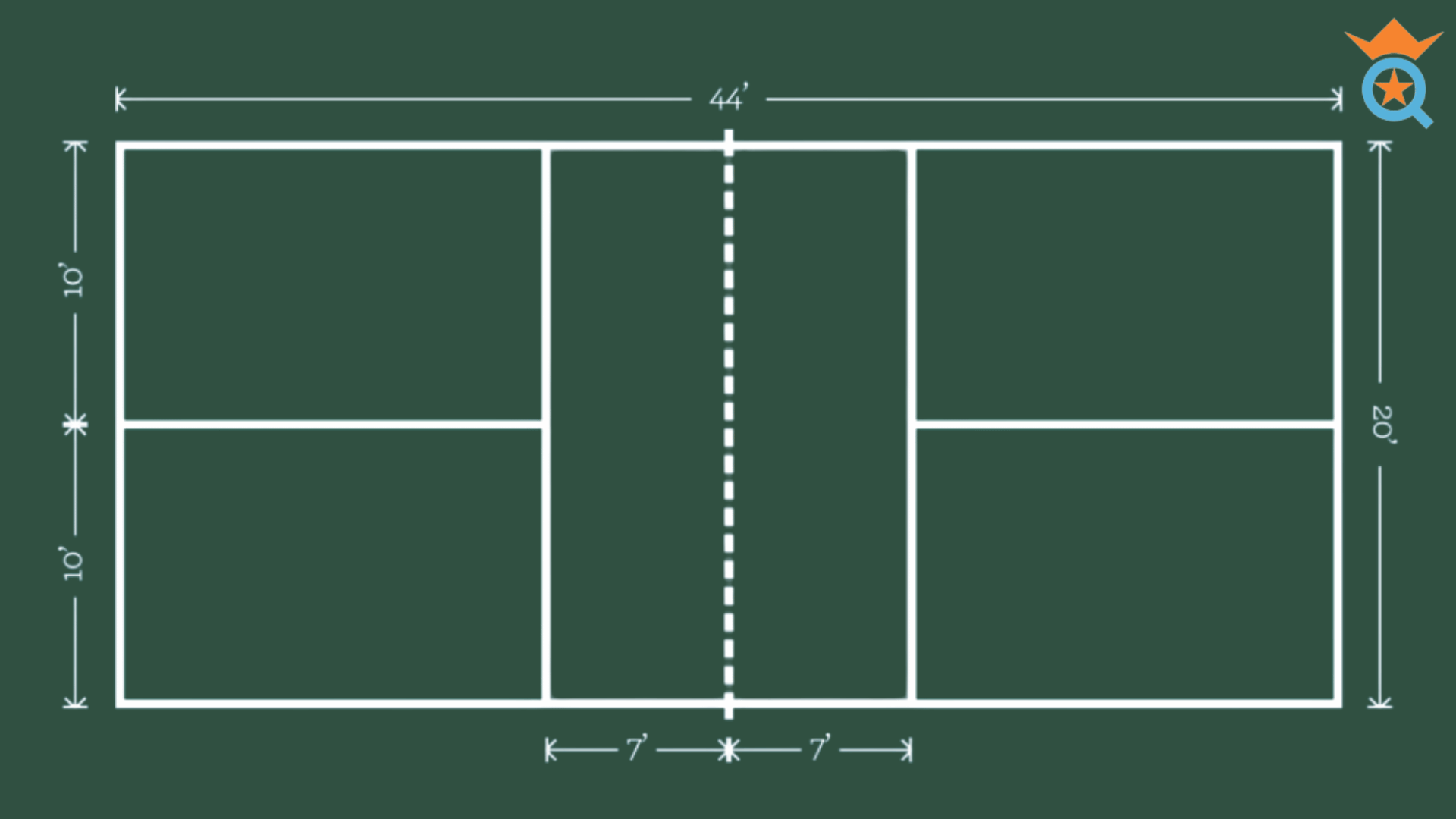Padel, a dynamic and captivating sport, has gained popularity among players of all ages and skill levels.
This unique game combines the best of Tennis and Squash, offering an enjoyable and competitive experience for everyone. Padel emphasizes social interaction, making it an ideal activity for men, women, and youth to engage in together.
With its blend of strategy and athleticism, Padel is the perfect game for those seeking a fun, professional, and inclusive sporting experience.

Comparing Padel, Tennis, and Squash
Padel, Tennis, and Squash are all popular racquet sports with distinct characteristics that set them apart. Let's explore a quick comparison of these three games to better understand their similarities and differences.
| Aspect | Padel | Tennis | Squash |
|---|---|---|---|
| Court Size | Smaller court (20m x 10m) | Larger court (23.77m x 8.23m singles) | Smallest court (9.75m x 6.4m) |
| Walls | Glass and metallic mesh walls surround the court | No walls around the court | Four walls enclosing the court |
| Racquet | Solid, stringless racquet with an elastic surface and holes | Strung racquet with a larger head and strings | Strung racquet with a smaller head and strings |
| Ball | Low compression tennis ball | Standard tennis ball | Small, hollow rubber ball |
| Format | Primarily doubles | Singles and doubles | Primarily singles |
| Playing off the walls | Allowed, essential for strategy | Not applicable | Allowed, central to gameplay |
| Serve style | Underarm serve | Overarm serve | Underarm serve |
While Padel, Tennis, and Squash share certain similarities as racquet sports, their unique aspects make each game a distinct experience.
Padel's smaller court size, enclosed playing area, and emphasis on strategy offer a refreshing alternative to traditional Tennis and the fast-paced gameplay of Squash.
The Importance of Strategy in Padel
Building on exploring Padel's unique aspects, it is crucial to delve into the strategic elements that make this sport so compelling. Padel distinguishes itself by emphasizing strategy over strength and power, requiring players to focus on tactics and finesse:
- Clever ball placement to outmaneuver opponents
- Effective use of walls for strategic advantage
- Teamwork and coordination in doubles play
- Adaptability and flexibility in playing styles
Furthermore, match-craft plays an essential role in winning points in Padel. Mastering match-craft involves:
- Anticipating opponents' moves
- Making intelligent decisions on shot selection
- Exploiting the unique features of the Padel court
- Constantly adapting tactics and making strategic adjustments
The strategic elements of Padel and the importance of match-craft set it apart from other racquet sports, making it an engaging and mentally stimulating game.
Developing and honing these skills allows players to gain a competitive edge and increase their chances of success on the Padel court.
The Padel Court
An essential aspect of understanding Padel is examining the distinct features of its playing field. The Padel court offers a unique environment that combines elements of both Tennis and Squash, resulting in an engaging and fast-paced game.
Dimensions and Structure
Size and Layout:
- A Padel court measures 20 meters in length and 10 meters in width, making it considerably smaller than a standard Tennis court.
- The playing area is divided by a net in the middle, with a maximum height of 88 cm at the center, rising to 92 cm on both sides.
- The court is further divided by a service line at the middle and another line, 3 meters from the back wall, marking the service area.
Glass and Metallic Mesh Construction:
- The Padel court is enclosed by walls made of glass and metallic mesh.
- The back walls are predominantly glass, reaching up to 3 meters in height, while the glass sidewalls extend for 4 meters.
- The remainder of the court is enclosed by a metallic mesh, reaching a height of 4 meters, providing durability and visibility for spectators.
Scoring and Rules
Scoring System:
- Padel's scoring system is similar to Tennis, with points progressing from 15, 30, and 40, followed by a game point.
- Matches are usually played in the best-of-three format, with a set being won by the first team to reach six games, provided they have a two-game lead.
Unique Elements of Padel:
- The serve in Padel is executed underarm, contrasting the overarm serve in Tennis.
- Players are allowed to play the ball off the glass walls, similar to how Squash is played, adding a unique strategic dimension to the game.
- The combination of the smaller court, underarm serves, and the ability to use walls during play set Padel apart from other racquet sports, making it a distinctive and exciting game to play and watch.

Padel Equipment
A crucial component of the Padel experience is the specialized equipment used in the game, which includes the Padel racquet and ball. Both the racquet and ball are uniquely designed to suit the dynamics of Padel and contribute to the sport's distinctive gameplay.
Padel Racquet
The Padel racquet is a key piece of equipment that sets the sport apart from others. Its features include:
- Short and solid construction: Unlike Tennis racquets, Padel racquets are shorter and do not have strings.
- Elastic surface: The racquet's surface is elastic, providing a different feel and ball response compared to traditionally strung racquets.
- Holes: The racquet features a pattern of holes that help reduce air resistance and improve maneuverability during play.
These characteristics make Padel racquets well-suited for the fast-paced, close-quarters gameplay that Padel offers.
Padel Ball
The Padel ball is another essential piece of equipment that differentiates the sport from its racquet-sport counterparts. The Padel ball is:
- A low-compression tennis ball: Padel balls have lower internal pressure compared to standard tennis balls, resulting in a slower and more controlled bounce.
- Suitable for indoor and outdoor play: The lower compression makes Padel balls more adaptable to different court surfaces and playing conditions.
The use of a low-compression tennis ball in Padel enhances the strategic elements of the game, making it more accessible to players of all skill levels and ensuring enjoyable gameplay.
The Growing Popularity of Padel
As Padel gains momentum across the globe, its unique characteristics and accessibility are driving the sport's increasing popularity. From mini tennis courts and small backyard installations to the community and social benefits it offers, Padel is quickly becoming a beloved pastime for many.
Mini Tennis Courts and Small Backyard Tennis Courts
The compact size of Padel courts has led to a growing trend in residential areas:
- Homeowners are increasingly installing mini tennis or Padel courts in their backyards, taking advantage of the smaller space requirements compared to traditional tennis courts.
- These installations provide a convenient and accessible way for families and friends to engage in the sport at their leisure, without the need for dedicated club memberships or public court bookings.
Community and Social Benefits
Padel's appeal extends beyond the court, as it fosters connections and camaraderie within communities:
- The sport's emphasis on doubles play encourages teamwork and cooperation, bringing people together for fun and healthy competition.
- Padel's inclusive nature, which caters to players of all ages and skill levels, promotes social interaction and creates opportunities for shared experiences, fostering a sense of community among participants.
Padel's growing popularity can be attributed to its adaptability, easy integration into residential settings, and the community-building opportunities it provides.
As more people discover and embrace the sport, Padel is poised to become an enduring fixture in the world of racquet sports.
The Popularity of the Game
Takeaways
Padel is an exciting and engaging sport that combines the best elements of Tennis and Squash while offering a unique playing experience on a smaller court.
Its emphasis on strategy, match-craft, and social interaction makes it appealing to players of all ages and skill levels. The sport's compact court dimensions and specialized equipment further contribute to its accessibility and growing popularity.
As Padel continues to gain momentum worldwide, we encourage readers to give this fascinating game a try and experience the thrill of a sport that skillfully blends the dynamics of Tennis and Squash.
FAQs
What is a small tennis court called?
The tennis small court that is one-third the size of a regular tennis court and allows the ball to bounce off any wall is not typically referred to as a tennis court. However, based on the idea you provided, it could be called a "padel court." Padel is a racquet sport that originated in Mexico and is popular in many Spanish-speaking countries. It is played on a court that is similar in size to the one you described, with the main difference being that there are specific rules regarding where the ball can and cannot be hit.
What is padel?
Padel is a racquet sport that originated in Mexico and is similar to tennis. It is played on a smaller court that is about one-third the size of a standard tennis court.
How is padel different from tennis?
Padel is different from tennis in a few ways. The court is smaller, and players use solid paddles instead of tennis racquets. The ball can also bounce off any wall, including the surrounding glass walls, before being returned.
What is a mini tennis court?
A mini tennis court is a smaller version of a standard tennis court that is used for younger players or those who are new to the sport. It is about half the size of a regular court and is marked with different lines to indicate the different playing areas.
Can you play different sports on the same court?
Yes, some courts are designed to be multi-purpose and can be used for different sports. For example, some courts can be used for both tennis and pickleball.
What are pickleball courts?
Pickleball courts are smaller than standard tennis courts and are used for the sport of pickleball. They are typically 20 feet wide by 44 feet long and have a net that is slightly lower than a tennis net.
What is platform tennis?
Platform tennis is a racquet sport that is played on a smaller court that is surrounded by walls. It is similar to paddle tennis, but the court is raised and players use a smaller, perforated paddle.
What is a pickleball court?
A pickleball court is a small court that is used for the sport of pickleball. It is typically 20 feet wide by 44 feet long and has a net that is slightly lower than a tennis net.
What is soft tennis?
Soft tennis is a variation of tennis that is played with a soft rubber ball instead of a standard tennis ball. It is a popular sport in many Asian countries.
How do you play tennis?
Tennis is played on a court with a net and two players or teams. Players use a tennis racquet to hit the ball over the net and into the opponent's court. The goal is to hit the ball in a way that makes it difficult for the opponent to return it.
How do you play pickleball?
Pickleball is played on a small court with a net and two to four players. Players use paddles to hit a small plastic ball over the net and into the opponent's court. The goal is to hit the ball in a way that makes it difficult for the opponent to return it.
What are surrounding glass walls used for in a padel court?
Surrounding glass walls can be used to create a more visually appealing court and provide a clear view of the action for spectators. They can also be used to keep the ball in play by preventing it from bouncing out of the court.








